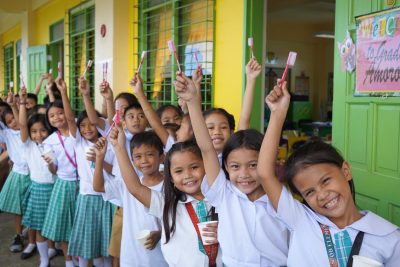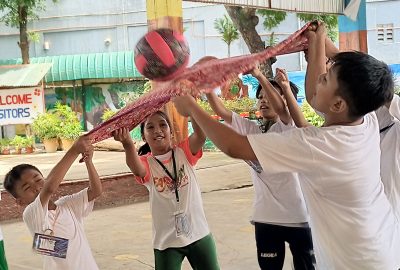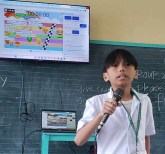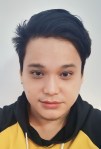How traditional approaches to teaching are being challenged in the Philippines
Ekxel Carlo T. Degollacion looks at how an elementary government school in the Philippines has challenged traditional approaches to teaching and learning.
Conventional learning
In the Philippines, education in public schools has long been defined by rote memorization, teacher-centered learning, and a ‘rigorous’ subject-based curriculum. This traditional approach, which is based on a system that promotes conformity and passive learning, is currently being questioned as educators seek more engaging and adaptive models to better prepare children for the challenges of the twenty-first century with the support of the Philippines Department of Education (DepEd) and the National Teachers’ College (NTC).
How things came together

With new ideas arising from the Lunduyan sa Kahusayan Teachers’ Program, a joint initiative of DepEd and NTC, Gun-ob Elementary School has broken with more traditional practice by introducing what we have called ‘Project REALM’ – the Responsive Experiential Adaptive Learning Model. to guide practice at the school. Jointly designed by teachers Ekxel Carlo T. Degollacion and Charisse A. Talingdan, Project REALM is poised to change the way students learn and engage with their studies.

It is built around four separate but interconnected elements:
- The idea of HyFlex Learning.
- The application of a ‘Pure Activity’ methodology.
- Tech-based Learning.
- Team-based Learning.
These pillars provide a dynamic structure that prioritizes student participation, with the objective that every learning experience should be not only meaningful but also enjoyable.
What are the main ideas involved?
HyFlex Learning: giving students choice
The first cornerstone of Project REALM, HyFlex Learning, embodies the idea of adaptability. It acknowledges that each learner is unique and has different learning preferences. Whether in a typical classroom setting or using virtual reality, or a combination of the two, Project REALM allows students more choice in the path that best suits their learning style.
When engaged in remote learning, using feedback methods such as polls and surveys have also proved to be extremely beneficial. Educators can modify and tailor their approach to ensure a more engaging and productive learning experience to assess student comprehension during live online sessions and then follow up with post-session surveys. We have found this to be useful when getting feedback about teaching methods and topic relevancy.
The Pure Activity Method: learning through experience

The Pure Activity Method, the second core component of Project REALM, is built on the notion of Activity-based Learning (ABL) which encourages students to engage in hands-on experience, experiments, and real-world applications of their learning. It aims to stimulate curiosity, promote a deeper grasp of concepts, and transform learning into an exciting journey.
Gamification can add another dimension to active learning. Using Malongball, Dodgeball, Duck Race, Emoji Race, and other interactive time on task activities, adds excitement and interaction to learning. Games can also reinforce educational concepts and with experiential learning, comes enthusiasm and knowledge.
Tech-based Learning: embracing the digital age
 With its emphasis on Tech-based Learning, Project REALM acknowledges that digital technology is part of our everyday lives. By incorporating technology into the curriculum, students are exposed not just to modern-day tools, but also to their responsible and effective use as digital skills are enhanced. It enables users to conduct research using digital resources, collaborate with peers online, and produce digital projects. This in turn means that students become problem solvers in the digital realm rather than just passive consumers of technology.
With its emphasis on Tech-based Learning, Project REALM acknowledges that digital technology is part of our everyday lives. By incorporating technology into the curriculum, students are exposed not just to modern-day tools, but also to their responsible and effective use as digital skills are enhanced. It enables users to conduct research using digital resources, collaborate with peers online, and produce digital projects. This in turn means that students become problem solvers in the digital realm rather than just passive consumers of technology.
Activities like editing pictures and videos, vlog posting, video creation, and more tech-based activities have become a dynamic part of what Project REALM offers. With accessible applications like PicsArt, Canva, Ibis, and Flipaclip, students can enhance their creativity, communication skills, and digital literacy as they explore and experiment with multimedia content, making learning not only engaging but also reflective of real-world skills.
Team-based learning: the power of collaboration

The fourth Project REALM pillar is Team-based Learning, which emphasizes the significance of teamwork and communication in today’s environment. The capacity to operate well in groups is essential in today’s interconnected global society. Project REALM fosters this important ability by encouraging students to work together on a variety of projects and assignments under the HyFlex Teaching-Learning process.
Team-based learning not only improves students’ social skills but also promotes a sense of belonging and camaraderie among them. It teaches children how to resolve conflicts, share responsibility, and how to capitalize on one other’s abilities. Students are better prepared for the collaborative character of the real world when they work in groups.
A new vision for the school
School Principal Arlene T. Sumalinog is positive about how Project REALM is changing our school. Students at Gun-ob Elementary School are moving on. No longer just passive recipients of knowledge; they are becoming active participants in an active learning journey using the Project REALM framework. With the support of the Principal, the hard work of her staff and the guidance of the Department of Education and the National Teachers College, Project REALM is an example of what can be achieved even when ‘traditional’ didactic teaching methods and passive learning are deeply embedded in an educational system. As we continue to work together, we hope to keep driving Project REALM forward to make an increasingly relevant and enjoyable learning experience part of the everyday life of our students.
 Ekxel Carlo T. Degollacion is a Department of Education teacher in the Philippines, working at the Gun-ob Elementary School.
Ekxel Carlo T. Degollacion is a Department of Education teacher in the Philippines, working at the Gun-ob Elementary School.
Find out more about what is going on at the school here.
All images with kind permission from Gun-ob Elementary School.

